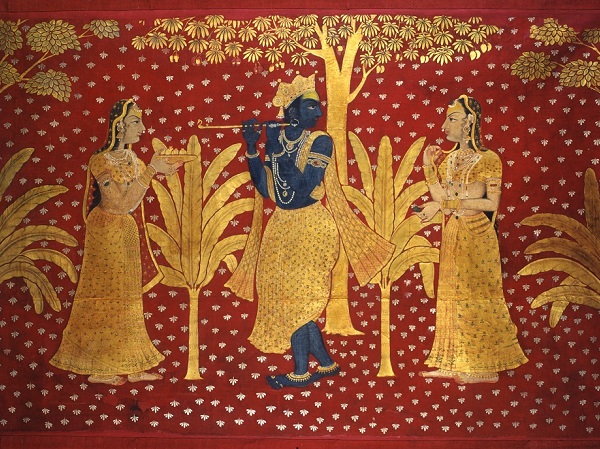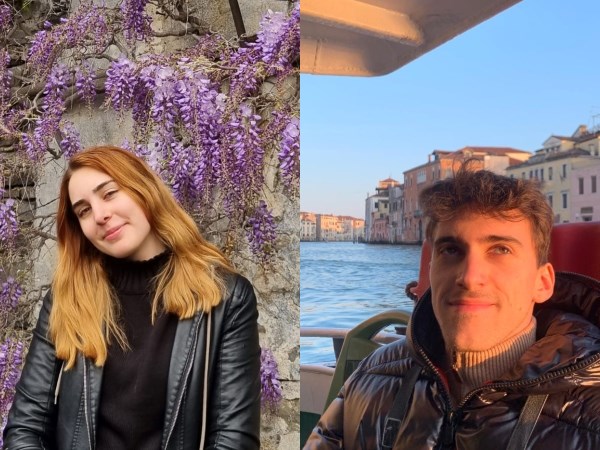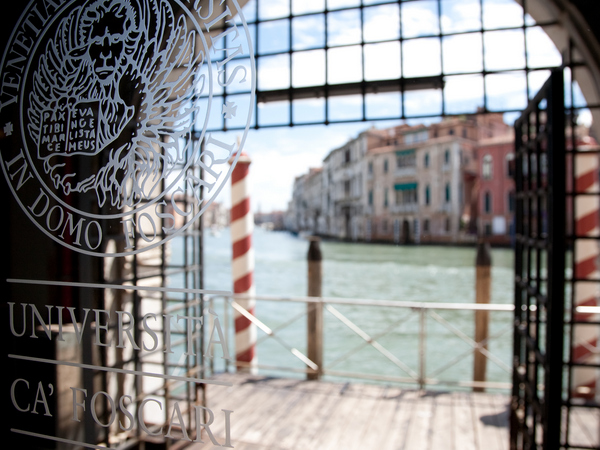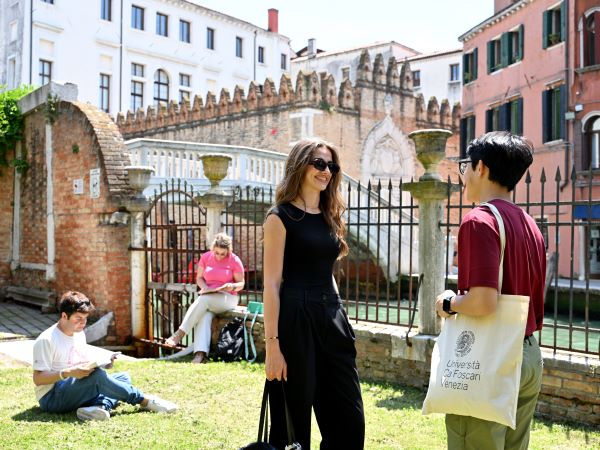On 27 May 2021 at 5 p.m., Professor Thomas Dähnhardt of Ca’ Foscari’s Department of Asian and North African Studies will participate in a conference at MAO (Museum of Oriental Art) in Turin, entitled “Krishna, personificazione dell’amor divino”. The conference will be held as part of the exhibition “Krishna, il divino amante” (Krishna, the divine lover), curated by Dr Claudia Ramasso, a Conservator for Southern and South-East Asia at MAO, and by Professor Dahnhardt himself. India’s Consul General, Dr Vinoy George, will also participate.
Krishna is the subject of the conference, and of the four religious paintings that are on display for the first time at MAO. They are pichhwais – large devotional paintings on cloth that belong to the Rajasthan tradition. The paintings are accompanied by a selection of poems ascribable to the bhakti devotional movement, which involves the adoration of an incarnation or representation of a divinity. The dialogue between the paintings and the poems aims to create the kind of aesthetic experience that is central to Indian tradition.
The exhibition at MAO is open until 26 September 2021. We have interviewed the curators, Dr Ramasso and Professor Dahnhardt.
Krishna is among the most well-known Hindu gods, even beyond India’s borders. How did his importance grow and his worship develop?
DÄHNHARDT: Krishna (which literally means “dark” or “dark blue”) is certainly one of the most well-known gods in India and beyond the geographical and cultural borders of South Asia, thanks to some devotional movements that have an international appeal. Even though it is an ancient worship, which is attested in the epic Mahabharata and Bhagavad-gita, the devotion to Krishna became more widespread starting in the 15th century, from the historic region of Braj Mandal (literally “cow’s fence”) and its centres Mathura and Vrindavan, which have traditionally been associated with this god.
During the Mughal era (1526-1857) in particular, Krishna was regarded as a tangible, human manifestation of a transcendental order. He was at the centre of a rich and varied tradition, in which works of art complemented devotion and intellectual speculation. These artistic products, which include literature, paintings and sculptures, make the god’s divine nature explicit and therefore satisfy the worshippers’ need for a reference point who can manifest sacredness in a distinctly human form.
In my view, Krishna's appeal lies in the juxtaposition of these delightfully human elements: the apparent frivolity, playfulness and carefree manner that characterises youth; the possibility of entering into a relationship with the god through love, understood in a variety of forms, such as the love of a mother for her child, the love shared by friends, or the love of lovers. The last one is probably the most “modern” element, even though the cultivation of love is arguably the most primordial instinct in all living creatures.
What is the purpose of this exhibition?
RAMASSO: The museum was inaugurated in December 2008. The long process that led to its establishment included the acquisition of private and public collections, as well as the purchase of some works of art from antique dealers.
The four paintings that are exhibited here were acquired between 2004 and 2005. The museum displays of 2007 and 2015 did not include the rotation of the paintings that were in the permanent collection, for issues of space and conservation. In fact, conserving pichhwais, paintings on cloth hangings, is a real challenge: the cloth is mounted onto a frame after it has been painted, and the tempera pigments allow for the paintings to be exposed only for short periods of time, after which they need to be placed in storage in order to be preserved.
This is the first opportunity to present these paintings to the public, thanks to the exhibitions scheduled at MAO in 2021. During the long closure of 2020, in addition to monitoring the works of art, MAO’s personnel also worked on conservative maintenance of the paintings, and on the consolidation of parts that were less adherent. This intervention and the predisposition of a new area for smaller exhibitions, in which anti-UV film is applied to the glass panels, have allowed us to add these paintings to MAO’s 2021 programme. This also happens to be the year in which the Republic of India begins the celebration of the 75th Anniversary of Independence, which is on 15 August 2022.
How did you select the paintings and the poems, which date back to different periods?
RAMASSO: Three of the paintings belong to the pichhwai tradition – they are large devotional paintings on cloth, belonging to the Rajasthan tradition and devoted to Krishna.
The fourth painting, which is smaller, is from the area of Kishangarh. It shows the same subject (Krishna, Rādhā and the gopīs, legendary Krishna devotees) and perfectly suits the theme of this exhibition, which aims to introduce the public to this type of painting and to a selection of poems ascribable to the bhakti devotional movement.
Because the paintings are more difficult to preserve, the ones on display are more recent (17th-19th centuries) than the poems (15th-17th centuries). Nevertheless, they represent themes that are typical of the devotional literature of North-Western India, which flourished from the 14th century onwards and focused on Krishna. The dialogue between the paintings and the poems is related to the concept of rasa – the aesthetic experience which is central to the Indian tradition. Rasa means “juice”, “essence” or “taste” and indicates a specific emotional state that is intrinsic to works of art, be they visual, literary or musical. This emotional state is intended to evoke a similar emotional state in the observer. The poems presented next to the paintings are not only meant to clarify the meaning of the paintings: they also invite the viewer to experience aesthetic pleasure thanks to the universal language of art.
Professor Dähnhardt, how did your research inform the curation of the exhibition?
This is my first curation, even though in the past I collaborated in the mounting of exhibitions, in particular in England. It is certainly a gratifying experience because this type of activity allows for great freedom and requires an expertise that is different from the one needed in academic research and teaching.
In this particular case, I contributed by selecting verses from devotional literature in Hindi, to illustrate in simple terms the images that are on display. The aim was to make them more accessible to the general public. Therefore, I had to find verses that referred to the painted scenes and that also create a link between the figures, the environment and the subjective reality of the observer – a museum visitor in a European city.
Even though there are relatively few pieces on display – or perhaps precisely because of this – I felt the need to create harmony between the visual and auditory representation. In fact, I hope that the visitors' attention will stay focused on these paintings, so that they can get closer to them and gain an understanding of Krishna thanks to this double means of representation. While this purpose is understood by the Indian devotees who go on a pilgrimage to temples and sanctuaries, the challenge for me was to recreate a similar experience in a European museum. It is up to the visitors to determine whether we have managed to achieve this aim.
Contact mao@fondazionetorinomusei.it. to sign up for the conference “Krishna, personificazione dell'amor divino'' and get the Zoom link to participate online.











